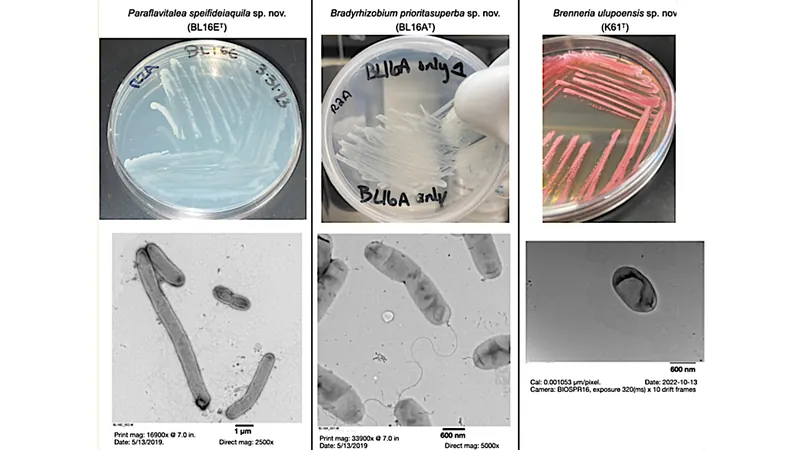
Revolutionizing Astrobiology Education: How Indigenous Insights and Genomics are Paving the Way for Discovery
2025-03-24
Author: Daniel
Introduction
In an exciting new development, the intersection of genomics and astrobiology education is providing unique opportunities to diversify the STEM workforce and enrich the field of space sciences. This initiative focuses on democratizing access to genomic data science, particularly for Indigenous students and educators, thereby fostering a new wave of scientific inquiry rooted in local cultures and perspectives.
A Groundbreaking Education Program
In collaboration with multiple institutions, a groundbreaking education program has been launched that incorporates cutting-edge sequencing technologies from industry leaders like Illumina and Oxford Nanopore. This program not only offers free bioinformatics platforms but also conducts teacher training workshops aimed at enhancing research and educational outcomes through a place-based science education framework.
The Role of Students and Researchers
This innovative program has enabled high school students and researchers to actively participate in the cultivation, sequencing, assembly, and annotation of the genomes of 13 bacterial species sourced from Mars analog sites. Remarkably, 10 of these discoveries represent novel species, contributing significantly to our understanding of life in extreme environments—a key aspect of astrobiology.
Discoveries and Impact
Participants, including students, teachers, and community members, played an essential role in identifying new bacteria that may be capable of chemolithotrophy, a process where organisms derive energy from inorganic compounds, which could have implications for life beyond Earth. They discovered species that produce N-acyl homoserine lactones, crucial molecules for bacterial communication, during their explorations.
Student Contributions
What's more, these educational experiences allowed students to engage in real-world space research, significantly boosting their interest and output in scientific inquiries. A highlight of this endeavor was the students' involvement in naming three novel species: 1. **Bradyrhizobium prioritasuperba** proposed by students from St. Andrew’s School in Honolulu, 2. **Brenneria ulupoensis**, named by the nonprofit organization Kauluakalana, and 3. **Paraflavitalea speifideiaquila**, nominated by students from Hawai‘i Baptist Academy.
Cultural and Scientific Integration
These contributions are not just academic; they resonate culturally, linking young scientists with the rich heritage of their regions while fostering a sense of belonging in the scientific community.
Conclusion
The initiative emphasizes the importance of combining ancestral knowledge with modern science, creating an inclusive paradigm that ensures diverse perspectives are integral to the ongoing exploration of life in the universe. The work continues, setting a precedent for future educational models and scientific research, showing the world that when varied voices come together, groundbreaking discoveries are within reach. With the potential to redefine science education and astrobiology research, this project represents a pivotal moment in our pursuit of understanding life beyond our planet. Could this be the key to unlocking the secrets of the cosmos?




 Brasil (PT)
Brasil (PT)
 Canada (EN)
Canada (EN)
 Chile (ES)
Chile (ES)
 Česko (CS)
Česko (CS)
 대한민국 (KO)
대한민국 (KO)
 España (ES)
España (ES)
 France (FR)
France (FR)
 Hong Kong (EN)
Hong Kong (EN)
 Italia (IT)
Italia (IT)
 日本 (JA)
日本 (JA)
 Magyarország (HU)
Magyarország (HU)
 Norge (NO)
Norge (NO)
 Polska (PL)
Polska (PL)
 Schweiz (DE)
Schweiz (DE)
 Singapore (EN)
Singapore (EN)
 Sverige (SV)
Sverige (SV)
 Suomi (FI)
Suomi (FI)
 Türkiye (TR)
Türkiye (TR)
 الإمارات العربية المتحدة (AR)
الإمارات العربية المتحدة (AR)